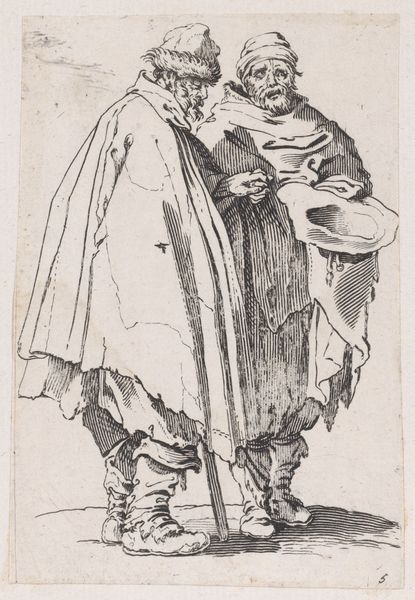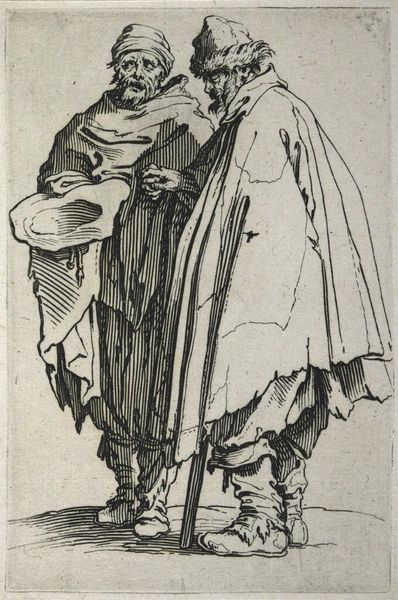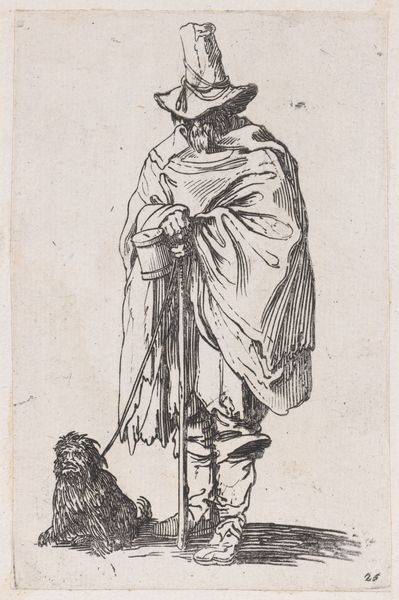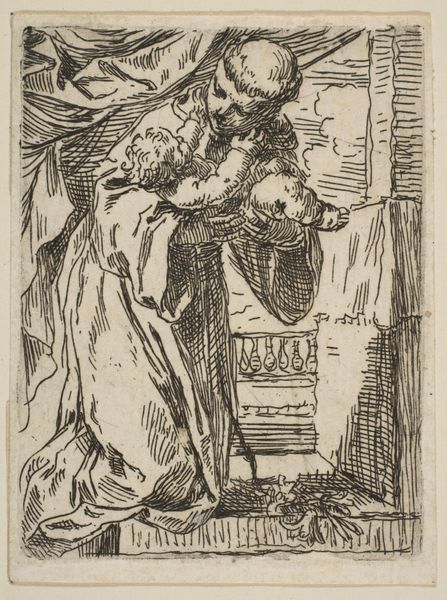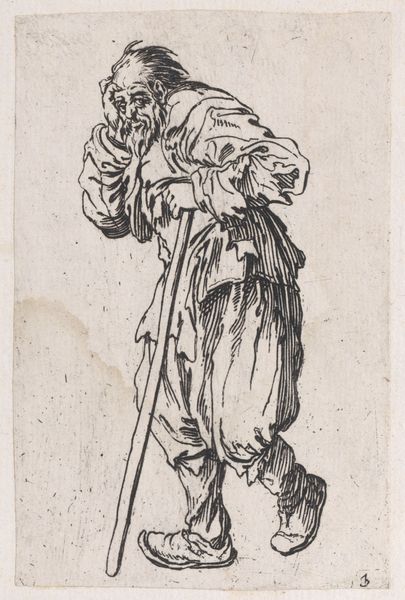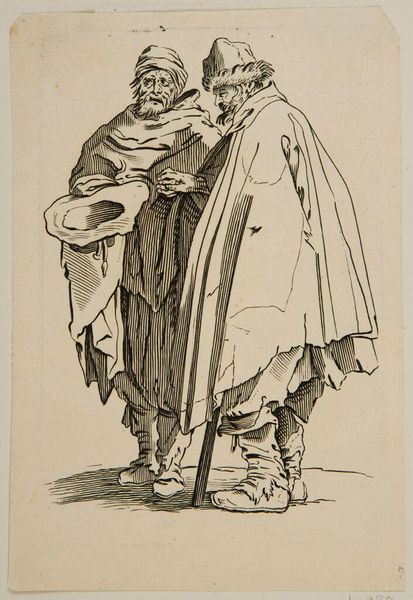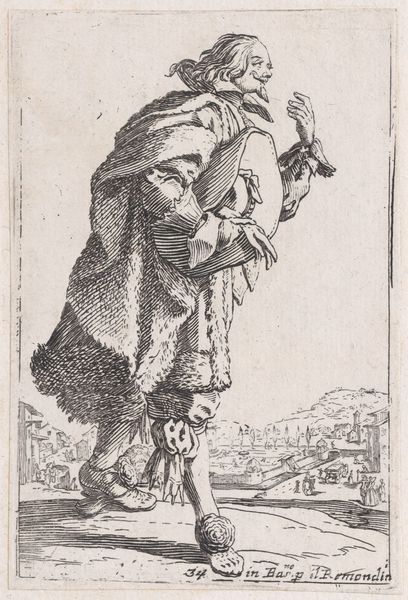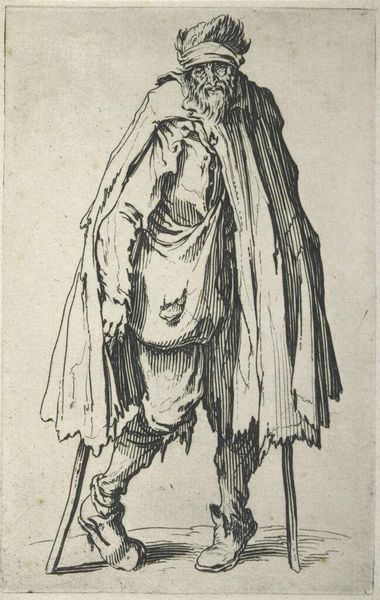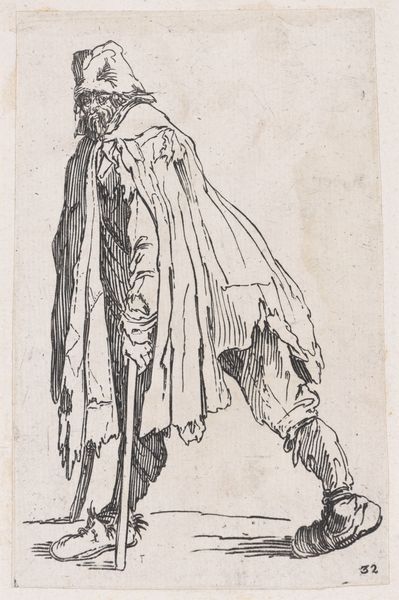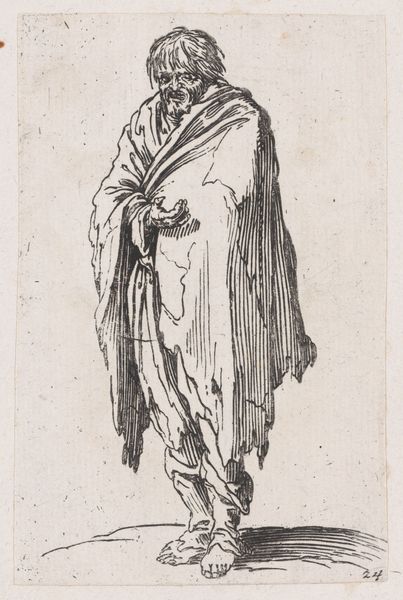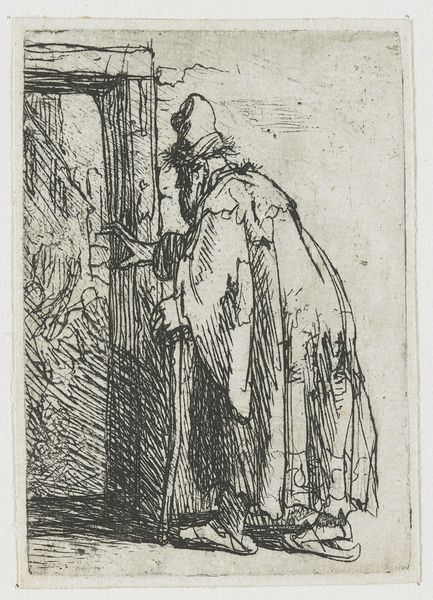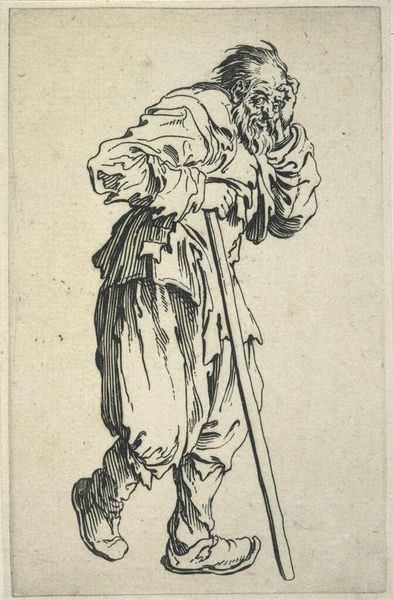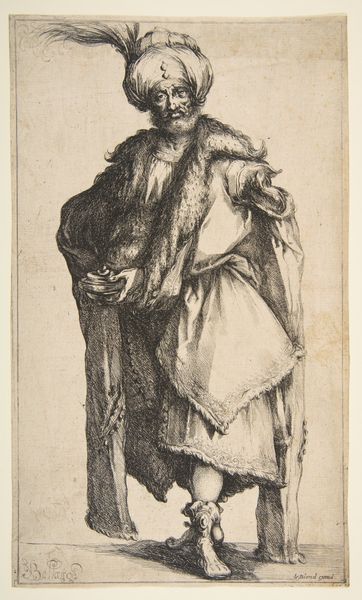
Reverse Copy of L'Aveugle et son Compagnon (The Blind Man and his Companion), from Les Gueux suite appelée aussi Les Mendiants, Les Baroni, ou Les Barons (The Beggars, also called the Barons) 1625 - 1700
0:00
0:00
drawing, print, engraving
#
portrait
#
drawing
#
baroque
# print
#
figuration
#
line
#
genre-painting
#
engraving
Dimensions: Sheet: 5 11/16 x 3 11/16 in. (14.4 x 9.4 cm) trimmed and backed
Copyright: Public Domain
Curator: Before us is "Reverse Copy of L'Aveugle et son Compagnon," an engraving dating back to somewhere between 1625 and 1700, currently held in the collection of the Metropolitan Museum. It depicts two figures in a style reminiscent of genre painting. Editor: My initial impression is one of starkness. The limited use of line creates an image of hardship; there's a textural contrast between the figures’ tattered garments and the relative emptiness of the background. Curator: This piece belongs to a suite known as "Les Gueux," or "The Beggars." Contextualizing it within the broader series unveils themes of social marginalization and the representation of outcasts during that period. The artist, albeit anonymous, offers a glimpse into the lives of those often ignored or reviled by mainstream society. Editor: Structurally, the composition is quite interesting. The figures dominate the frame, their postures suggesting a narrative, a silent dialogue almost. The artist uses hatching to model form and to imply shadow, focusing particularly on the rendering of the faces and clothing. It creates a striking tonal range despite its modest size. Curator: The work embodies intersectional issues present within 17th-century European society. It prompts considerations regarding disability, poverty, and social exclusion, all depicted through the lens of the anonymous artist. It highlights power structures and the way marginalized bodies are represented. Editor: Absolutely. The engraving technique, with its sharp lines and stark contrasts, effectively conveys a sense of vulnerability and rawness. Considering the visual vocabulary, there's a semiotic reading to be had as well. Sticks become symbols of their limited mobility and material deprivation, and so too their empty hat represents the precarity of their survival. Curator: I appreciate your formal analysis of the composition and symbolism. Reflecting on "Reverse Copy," I am reminded how art can offer profound insights into social injustices and historical inequalities. Editor: And for me, this piece is a valuable example of how simple, formally rigorous art can nevertheless provide complex commentary on society.
Comments
No comments
Be the first to comment and join the conversation on the ultimate creative platform.
